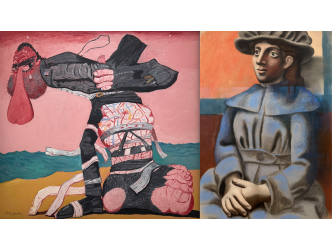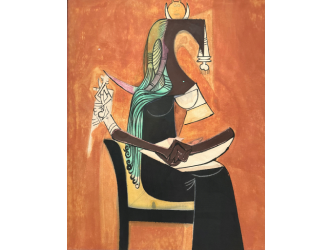The fate of women
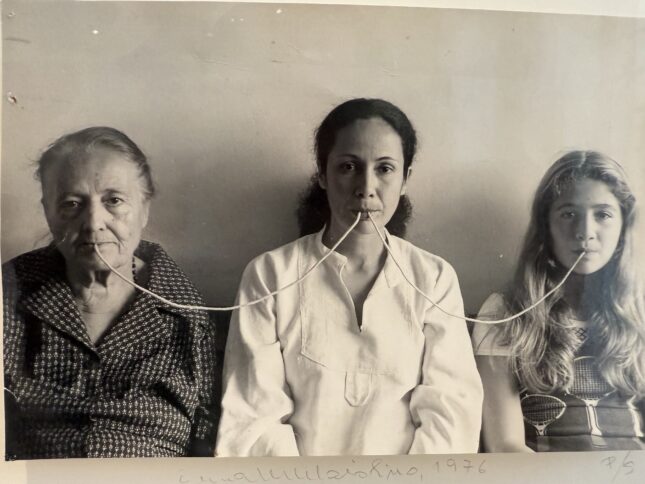
There’s a great deal embedded in the work of Anna Maria Maiolino. But nothing reveals itself at first glance. The artist—who, though born in Italy in 1942, has spent most of her life in São Paulo, by way of Venezuela and the United States—works in drawings, photographs and now primarily sculptures that touch on issues that have become particularly urgent: the fate of women, the immigrant experience, political repression…
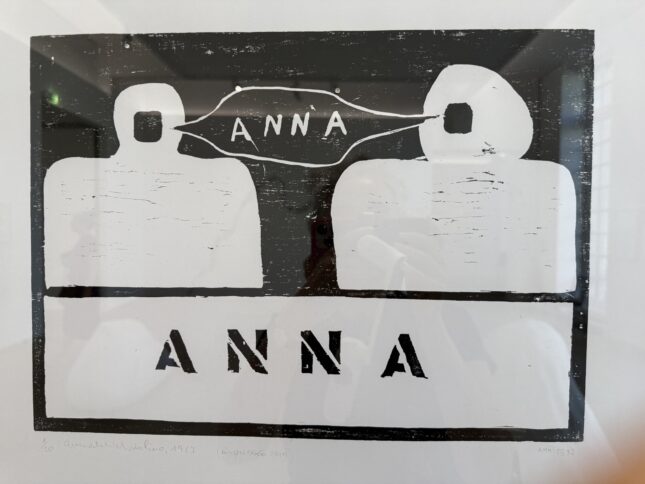
Global art star
At nearly 80, she has become a global art star. In 2024, she received the Golden Lion for Lifetime Achievement at the Venice Biennale.
Being an immigrant
She’s now here in Paris with a hundred works on view at the Musée Picasso through September 21. The institution regularly invites female “counterpoints” into the temple of the artist who famously “devoured” women. “Picasso and I share the experience of being an immigrant,” says Maiolino. “An experience which may have made him more violent,” she offers. “It’s hard to go live in another country, wherever it may be. But what’s remarkable is that through art, he managed to establish himself in Paris.”
Eating the enemy’s body
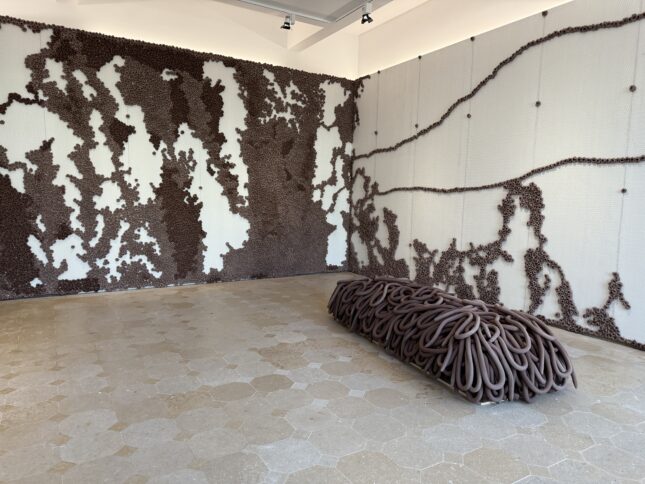
Maiolino draws on a theory developed by modern Brazilian artists, and more specifically by the poet Oswald de Andrade: anthropophagy. Inspired by indigenous customs, it describes the symbolic act of eating the enemy’s body to absorb their strength. “I think all immigrants are anthropophagous. If you don’t swallow the culture of the country you move to, you remain isolated. When I arrived in Brazil, I was first drawn to the Cordel tradition from the Northeast,” she says (referring to a popular form of poetic literature).
Dictatorship
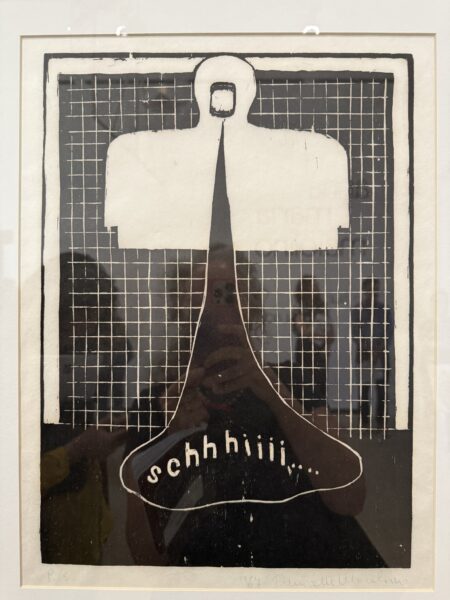
This inspired, among other things, black-and-white engravings of texts criticizing, by implicit means, the Brazilian military dictatorship. One example is “Schhhiii” (1967): a faceless silhouette, who could be either victim or executioner, emitting an emphatic “Shhh.
The clay epiphany
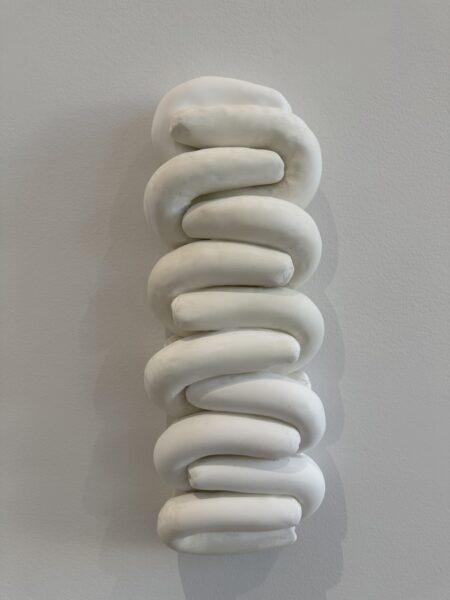
In the early 1980s, Maiolino discovered clay: an epiphany. To give her sculptures structure, she mixes earth with other materials. It’s in these abstract, three-dimensional works that she truly excels. We would have liked to have seen more of them. Though the entire ground floor of the Musée Picasso is devoted to the Brazilian artist, only one room really showcases her clay work. The rest of the exhibition is, as she herself describes it, “a storm of ideas”—a whirlwind journey through her œuvre, animated by a variety of small-format pieces, which on the whole can be rather difficult to understand.
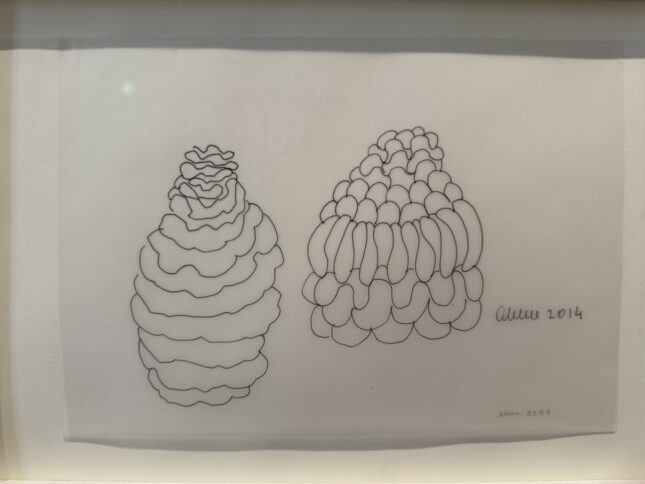
Metaphors for what?
Yet when it comes to clay, Maiolino displays extraordinary dexterity. “It’s the material itself that guides me,” she says. Through these abstract forms, one senses the endless possibilities of her sculpture practice. The foundation of her vocabulary is a coil, a kind of infinitely long, oversized spaghetti strand. She piles them together to create enormous blocks that form strange, inert masses. She also isolates them like giant earthworms—trophies of sorts, mounted on the wall. These are metaphors for existence. To each their own interpretation. Are they about sexuality? Fragments of intestines? Even excrement?
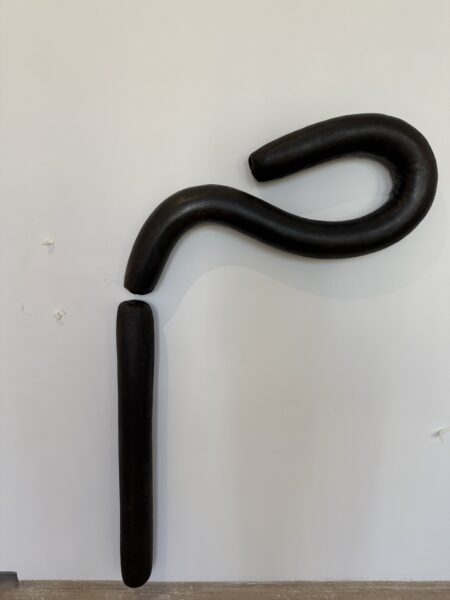
Living with a smile
Her answers, like her works, are never literal: “Human beings are full of contradictions. Contradictions in the act of eating. Contradictions in the act of living.” Meaning: We consume food that we later expel; we live knowing we will one day die. “I try to live with a smile so I can die with a smile,” concludes the 83-year-old artist, still overflowing with abundant energy.
Through September 21 – www.museepicassoparis.fr/en/
Support independent art journalist
If you value Judith Benhamou Reports, consider supporting our work. Your contribution keeps JB Reports independent and ad-free.
Choose a monthly or one-time donation — even a small amount makes a difference.
You can cancel a recurring donation at any time.


